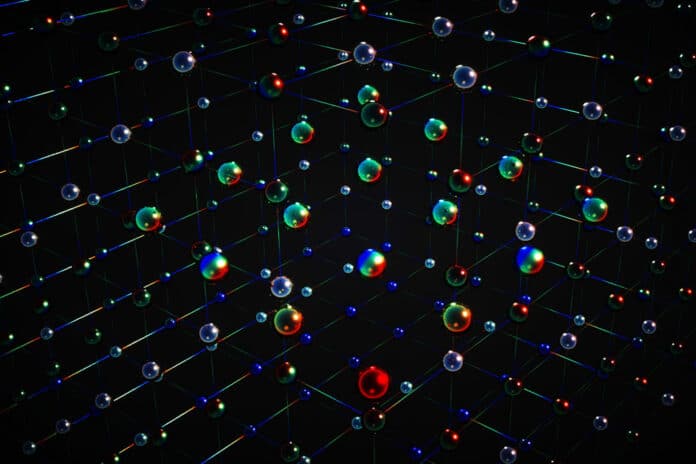Just like electrons and photons, atoms are subject to the laws of quantum dynamics. Still, their quantum behaviors are only visible when cooled to a small fraction of the degree of absolute zero. Laser cooling is generally used to study the quantum properties of ultracold atoms for more than a quarter century.
In a new study, Japanese and U.S. physicists have used atoms about 3 billion times colder than interstellar space. They wanted to step forward toward an unexplored realm of quantum magnetism.
A Kyoto team used lasers to cool its fermions, atoms of ytterbium, within about one-billionth of a degree of absolute zero, the unattainable temperature where all motion stops. That’s about 3 billion times colder than interstellar space.
Rice University’s Kaden Hazzard, the corresponding theory author of a study, said, “The payoff of getting this cold is that the physics changes. The physics starts to become more quantum mechanical, and it lets you see new phenomena.”
Scientists first simulated a Hubbard model using optical lattices. Hubbard models are used to determine materials’ magnetic and superconducting behavior.
The newly Hubbard model has a special symmetry known as SU(N). Here, ‘SU’ denotes a special unitary group — a mathematical way of describing the symmetry and ‘N’ indicates the possible spin states of particles in the model.
The symmetry of the model and the intricacy of the magnetic phenomena it represents increase as N increases. There are six potential spin states for ytterbium atoms. The Kyoto simulator is the first to spot magnetic correlations in an SU(6) Hubbard model—which are mathematically impossible to compute.
Hazzard said, “The thermometer they use in Kyoto is one of the important things our theory provides. Comparing their measurements to our calculations, we can determine the temperature. The record-setting temperature is achieved thanks to fun new physics that has to do with the very high symmetry of the system.”
“That’s the real reason to do this experiment. Because we’re dying to know the physics of this SU(N) Hubbard model.”
Study co-author Eduardo Ibarra-García-Padilla, a graduate student in Hazzard’s research group, said, “the Hubbard model aims to capture the minimal ingredients to understand why solid materials become metals, insulators, magnets or superconductors.”
Ibarra-García-Padilla said, “One of the fascinating questions that experiments can explore is the role of symmetry. To have the capability to engineer it in a laboratory is extraordinary. If we can understand this, it may guide us to making real materials with new, desired properties.”
Hazzard said, “It could trap up to 300,000 atoms in its 3D lattice. Accurately calculating the behavior of even a dozen particles in an SU(6) Hubbard model is beyond the reach of the most powerful supercomputers.”
“Right now, this coordination is short-ranged, but subtler and more exotic phases of matter can appear as the particles are cooled even further. One of the interesting things about some of these exotic phases is that they are not ordered in an obvious pattern and are also not random. There are correlations, but if you look at two atoms and ask, ‘Are they correlated?’ you won’t see them. They are much more subtle. You can’t look at two or three or even 100 atoms. You have to look at the whole system.”
“Physicists don’t yet have tools to measure such behavior in the Kyoto experiment. But, work is already underway to create the tools, and the Kyoto team’s success will spur those efforts.”
“These systems are exotic and special, but the hope is that by studying and understanding them, we can identify the key ingredients that need to be there in real materials.”
Journal Reference:
- Taie, S., Ibarra-García-Padilla, E., Nishizawa, N. et al. Observation of antiferromagnetic correlations in an ultracold SU(N) Hubbard model. Nat. Phys. (2022). DOI: 10.1038/s41567-022-01725-6
